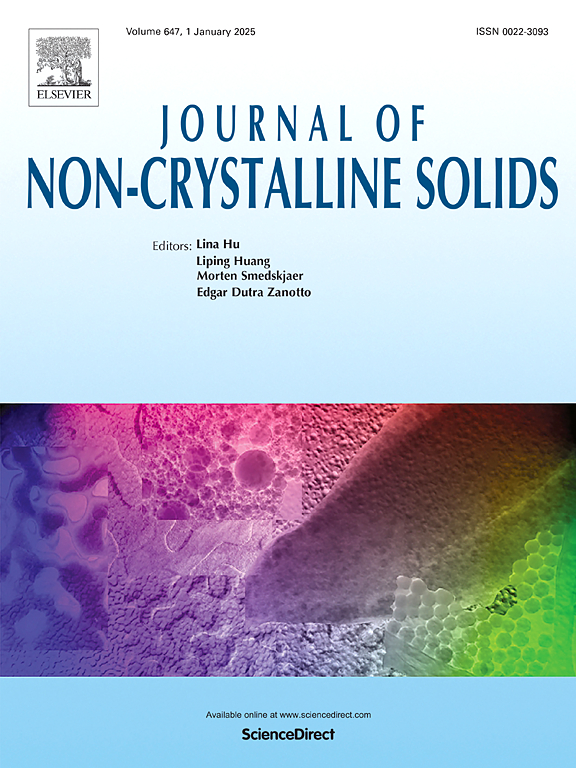Orientation effects on strengthening mechanism of network-structured metallic glass composites and nanoglasses
IF 3.5
3区 材料科学
Q1 MATERIALS SCIENCE, CERAMICS
引用次数: 0
Abstract
Network-structured metallic glass composites (NMGCs), including nano-glass (NG), are characterized by micron- or nano-sized glassy grains interconnected through glassy grain boundaries. The mechanical performance of these composites is strongly influenced by the microstructural parameters such as grain boundary width, grain size distribution, and particularly, grain boundary orientation alignment with respect to the loading axis. This study elucidates the orientation effect of grain boundaries on strengthening mechanisms that has not received due attention by far. Our findings reveal that composites with properly aligned grain boundaries exhibit superior strength compared to those with randomly oriented boundaries. This orientation-dependent strengthening originates from two synergistic mechanisms: controlled initiation of shear bands at properly oriented interfaces, and regulated propagation pathways for local shear during plastic deformation. These results provide insights for optimizing the synthesis of metallic glass composites, highlighting the critical role of grain boundary engineering in developing advanced metallic glass systems with enhanced strength and damage tolerance.
取向对网状金属玻璃复合材料和纳米玻璃强化机理的影响
网状结构金属玻璃复合材料(NMGCs),包括纳米玻璃(NG),其特点是微米或纳米尺寸的玻璃颗粒通过玻璃晶界相互连接。这些复合材料的力学性能受到晶界宽度、晶粒尺寸分布,特别是晶界取向与加载轴的排列等微观组织参数的强烈影响。本研究阐明了晶界取向对强化机制的影响,这是目前尚未得到足够重视的问题。我们的研究结果表明,与具有随机取向晶界的复合材料相比,具有适当排列晶界的复合材料具有更高的强度。这种依赖于取向的强化源于两种协同机制:在适当取向的界面上控制剪切带的启动,以及在塑性变形过程中调节局部剪切的传播途径。这些结果为优化金属玻璃复合材料的合成提供了见解,突出了晶界工程在开发具有增强强度和损伤容限的先进金属玻璃系统中的关键作用。
本文章由计算机程序翻译,如有差异,请以英文原文为准。
求助全文
约1分钟内获得全文
求助全文
来源期刊

Journal of Non-crystalline Solids
工程技术-材料科学:硅酸盐
CiteScore
6.50
自引率
11.40%
发文量
576
审稿时长
35 days
期刊介绍:
The Journal of Non-Crystalline Solids publishes review articles, research papers, and Letters to the Editor on amorphous and glassy materials, including inorganic, organic, polymeric, hybrid and metallic systems. Papers on partially glassy materials, such as glass-ceramics and glass-matrix composites, and papers involving the liquid state are also included in so far as the properties of the liquid are relevant for the formation of the solid.
In all cases the papers must demonstrate both novelty and importance to the field, by way of significant advances in understanding or application of non-crystalline solids; in the case of Letters, a compelling case must also be made for expedited handling.
 求助内容:
求助内容: 应助结果提醒方式:
应助结果提醒方式:


